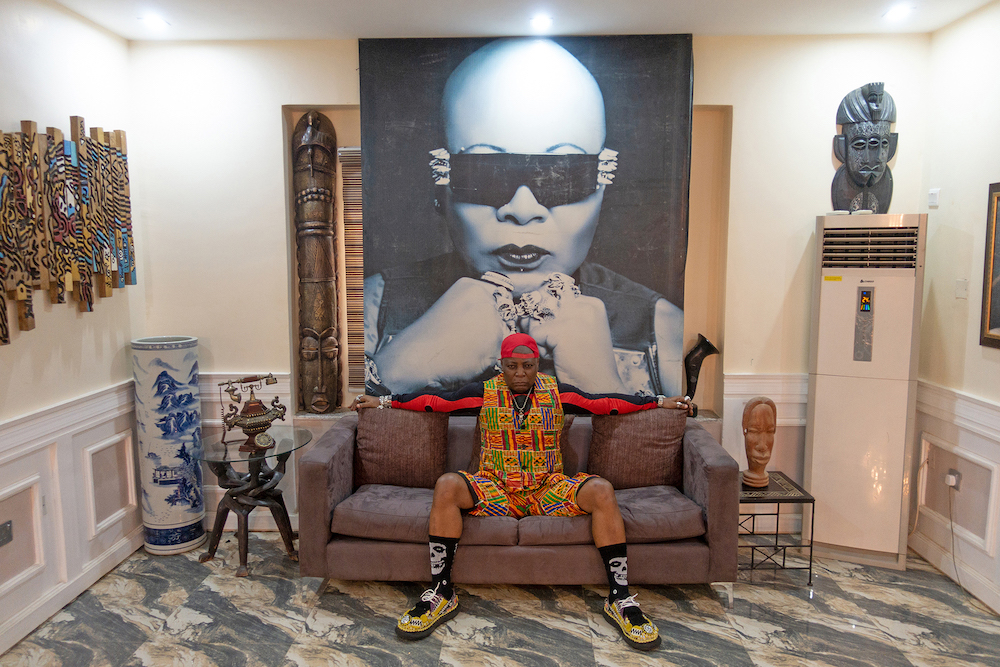
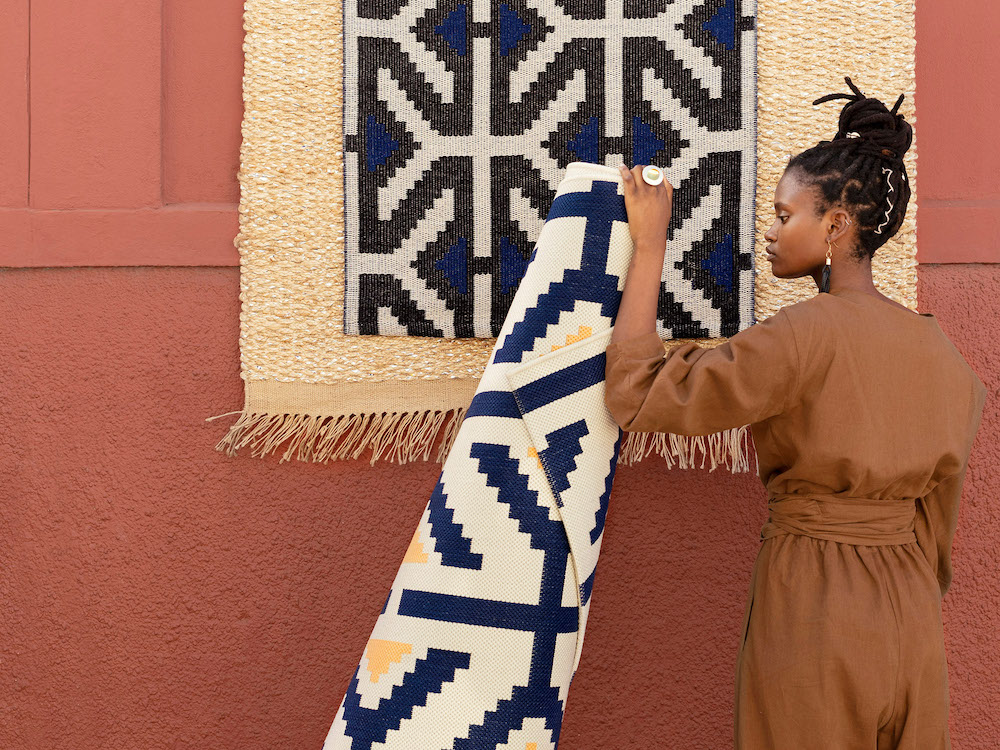
Personal identity remains at the core of the major design trends for the 2020/21 trend season according to the Heimtextil Trend Council, writes James Boston.
For the official Heimtextil Trend Presentation, Stijlinstituut Amsterdam director Anne Marie Commandeur introduced five diverse trends. “Pure Spiritual” finds balance in nature and mysticism, “Maximum Glam” turns the glamorous life tech-savvy, “Active Urban” values utilitarian, adaptable solutions, whereas “Heritage Lux” celebrates rich historical legacies and “Multi-Local” embraces global cultural influences.
Sustainability was still an overarching megatrend, which had not only filtered into the presentations, but also the trend forum itself, as Commandeur explained.
“We really wanted to make this positive impact and to do something which is also fun. We thought it was very important to address a fact that exhibitions in themselves are already very wasteful.”
“Normally, after four days of exhibition, everything at the trend forum goes to waste because it is too expensive to store it. “
“This means finding alternatives to new materials wherever possible, thus avoiding excess waste when the exhibition closes.”
The forum was therefore this year made up of a series of inflatable domes, to be stored and reused, plus refashioned sets and stages from other shows.
The intention behind the “Material Manifesto”, as it was described, was echoed in other installations within the Trend Space. One of five themes in this season’s offering, “Pure Spiritual”, addresses a renewed bond with nature. In addition, the Trend Space provides an overview of sustainable material innovations: A new material library, the so-called “Future Materials Library”, showed progressive, sustainably produced materials.
PURE SPIRITUAL
“Idealists seek perfection and purity, restoring equilibrium by connecting with the uber-natural,” Commandeur said.
“They embrace technology for good while shifting between realism and mysticism in pursuit of a personal haven.”
“…to form a renewed bond with nature, organic matter, raw materials and pure textiles are selected which show nature’s traces, organic structures and irregularities.”
One of the projects Commandeur said reflected this trend was the We Hotel Toya in Japan by Kenga Kuma. “Here the guests are there surrounded by textiles for comfort in the bar. It’s all made of cedar wood, the whole construction is about architecture and textiles.”
Materials in the Pure Spiritual trend are tailored from natural ingredients such as mycelium, algae and pine bark, linking to the botanical world.
“There’s a selection of real and fake leathers, as well as textiles with classic natural fibres such as jute and wool, while the colours relate to their origin and are defined by the implemented resources.”
“It’s a welcome possibility for interior spaces aiming to reflect values in today’s climate. The man-made and natural world merge into an environment that is sensitive and stimulating for the senses. Doing good will become an important decision-maker for purchases in which the origins should be transparent and resources recognised as valuable.”
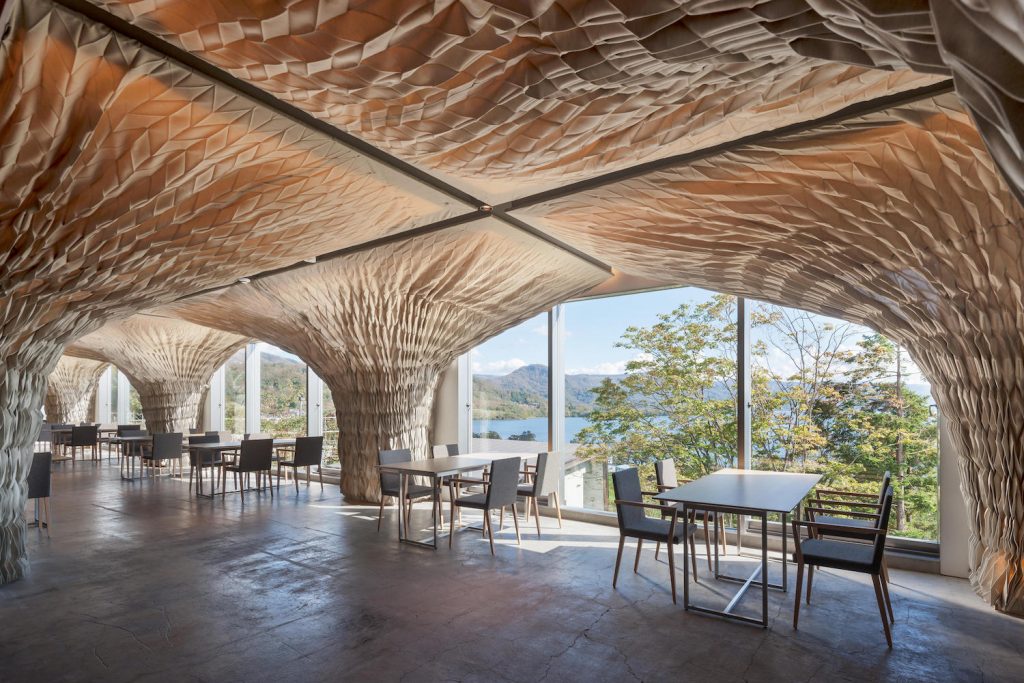
MAXIMUM GLAM
In our polarised world, it comes as no surprise that the second theme in this year’s trend forum was the antithesis of sustainable and natural. Maximum Glam is about pleasure seeking, layering theatrical influences and glamorous showtime aesthetics, forging a marriage between the crafted and digitally rendered.
“Textiles show a ‘more is more’ attitude through a mash-up of glam, gradients and spectrums, fake fur, pile and fringe, jacquard weaves and fantastic prints,” Commandeur said of Maximum Glam.
“The flashy, kitsch colour range becomes brutally glam thanks to electric sheen, synthetic shimmer, digital glitch and artful blur. A riot of clashes and rebellion.”
“It’s also mixing heritage together with new technology and bringing that all together in a very expressive, eccentric, surreal and a combination.”
“There is no room for vandalism, standardisation or commodification in this theme.”
This trend is exemplified by Spanish artist Guillermo Santoma, who shows his contemporary designs, including the Miami Couch, in the historical surroundings, beginning a dialogue between the 19th and the 21st centuries.
“Rebellion against convention is not for the faint hearted, it’s eccentric and it’s also what you see here with Santoma’s work.”
“This theme really plays to the art of textiles on stage and technology helps us to explore new textile realms and it can blur the boundaries between reality and illusion, between the physical and the digital by means of course via its communication as well as inspiration for design.”
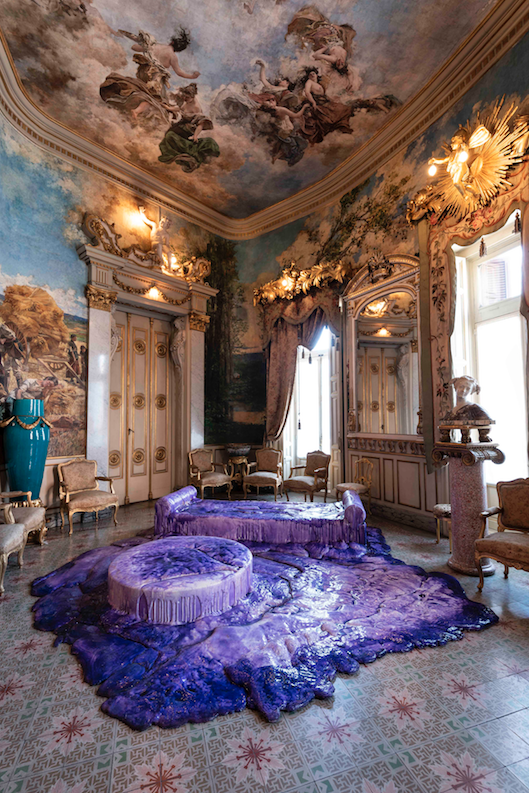
ACTIVE URBAN
The next trend theme, Active Urban, focuses on the urban dweller confronting the challenges of the fast paced, shape-shifting, man-made environment by searching for utilitarian, adaptable solutions.
“These consumers value tech performance while making smart use of available and renewable resources,” Commandeur said.
“Functionality is prioritised, while looking cool and working well remains key.
“Interior/sportswear hybrid textiles show smooth surfaces and a fun mash-up of graphic textures.”
Commandeur said that Active Urban is somewhat of an anti-trend, more about timeless classics or basics that are here for the long run.
“Sustainable, colourful, uncomplicated, it uses the highest quality of organic cottons like designer David Irwin – his use of material, efficiency of production, honest aesthetics, and kind of simplicity.”
Recycled inputs are also part of this trend with Commandeur pointing to collaborations between big brands and ethical designers like that of Stripped Down Striper by Simone Post, Adidas and I:CO.
“Simone Post has these beautiful carpets made in collaboration with Adidas and I:CO. Discarded sports shoes are very, very hard to recycle because the product is very complex with lots of materials included.”
“German-based company I:CO collects used clothes and shoes worldwide and has found a way to dismantle them and recycle them, turning them into little rugs and carpets.”
The theme may be paired back in tones; pinks, uniform blue, asphalt grey and caterpillar yellow, but it is also about playfulness, something not always associated with the commercial interiors market.
“Playfulness is extremely important, we really want to play, we need to play, everyone likes to play.”
“So that’s why the very serious Shaw contract business brought in collaborators, and came up with this idea of modular shapes that you can make personal.”
Inside shapes by Form US with Love for Shaw Contract comes in 12 colours and 17 pre-mixed shape options.
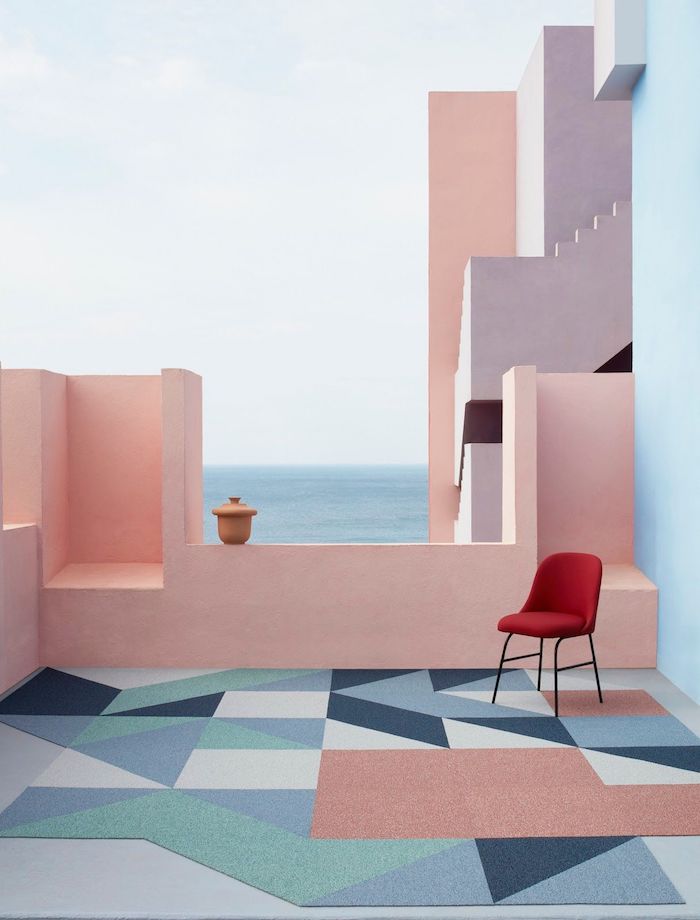
HERITAGE LUX
A trend that is likely to resonate in the Australian market is Heritage Lux, where preservers of historic legacies treasure sensuousness alongside the uncanny, enlightenment together with darkness, for a whole new immersive experience.
“This new narrative translates to a love for luxury and splendour, decoration and embellishment,” Commandeur said.
“Finding beauty in history and nature through ornamental patterning and alluring surface enhancement.”
“What is gone cannot be replaced but it can be re-imagined and inspiring, re-imagine the moods and the attitudes of today’s revellers who are in search of emotional and local experiences. This renewed feel free feeling should coincide with increasing desire for the magical. So it’s about splendour, decoration, embellishments.”
Commandeur said that society is realising the need to embrace and celebrate global heritage, and that ancient buildings around the world will be the experiential hotels of the world.
“So to understand and embrace history in a rapidly changing world environment, we want to preserve these historic details, but juxtapose the product functions with for instance very modern upholstery.”
She used The Chapel at the Joffa Hotel by John Pawson and Caffe Fernanda by R/GA Studio as two prominent examples of this trend done well.
“Reflecting on ancient history results in a palette featuring enigmatic blood red, sapphire and a lustrous mother-of-pearl,” she added.
MULTI-LOCAL
The final trend, the one Commandeur describes as “the most important of the year” and where “Indigenous style meets global influences” is that of Multi-Local, where hyper-locals go global, celebrating inclusivity over appropriation, honouring traditional craftsmanship and adjusting the world’s gaze to embrace exchange, creative integrity and diverse identities.
“This is a celebration of crafted and decorative pattern, from tribal and folkloric to geometric and abstract.”
“Textile colours become part of a wider cultural narrative, linked to local community, cultural heritage and private identity.”
“Global design will no longer be led by the press, instead there are strong design influences from the Caribbean, and from the African countries where cultural heritage is cherished and layered with global influences upon whom we can learn about resourcefulness.”
Commandeur credits the work of Stephen Tayo, an Amsterdam-based artist, who she says has captured what design can mean, not just as a way to dress or live but as a way of life.
“His work has featured in the New York Times and the images show strong individuals who are part of the design community in Lagos, shot in their own personal surroundings.”
“We see that the textiles which were in Pure Spiritual, in Lux Heritage, in Active Urban, in Maximum Glam, were in this very crystal way, layering all these styles, that is all about multi-layered consumers.”
“So this layering is something which we also think is interesting to explore further and this is what we all have to address in thinking of-design thinking and development thinking.”
Commandeur said this trend isn’t about where people are from, but where people are local and those two things can be very different. As a result, major brands are starting to put these types of influences in their ranges.
“Ikea have launched an overall collection featuring products from creators’ five African countries. This includes textile patterns or influences from African landscapes, giving a stage to African designers, for the first time, that’s a big step.”
